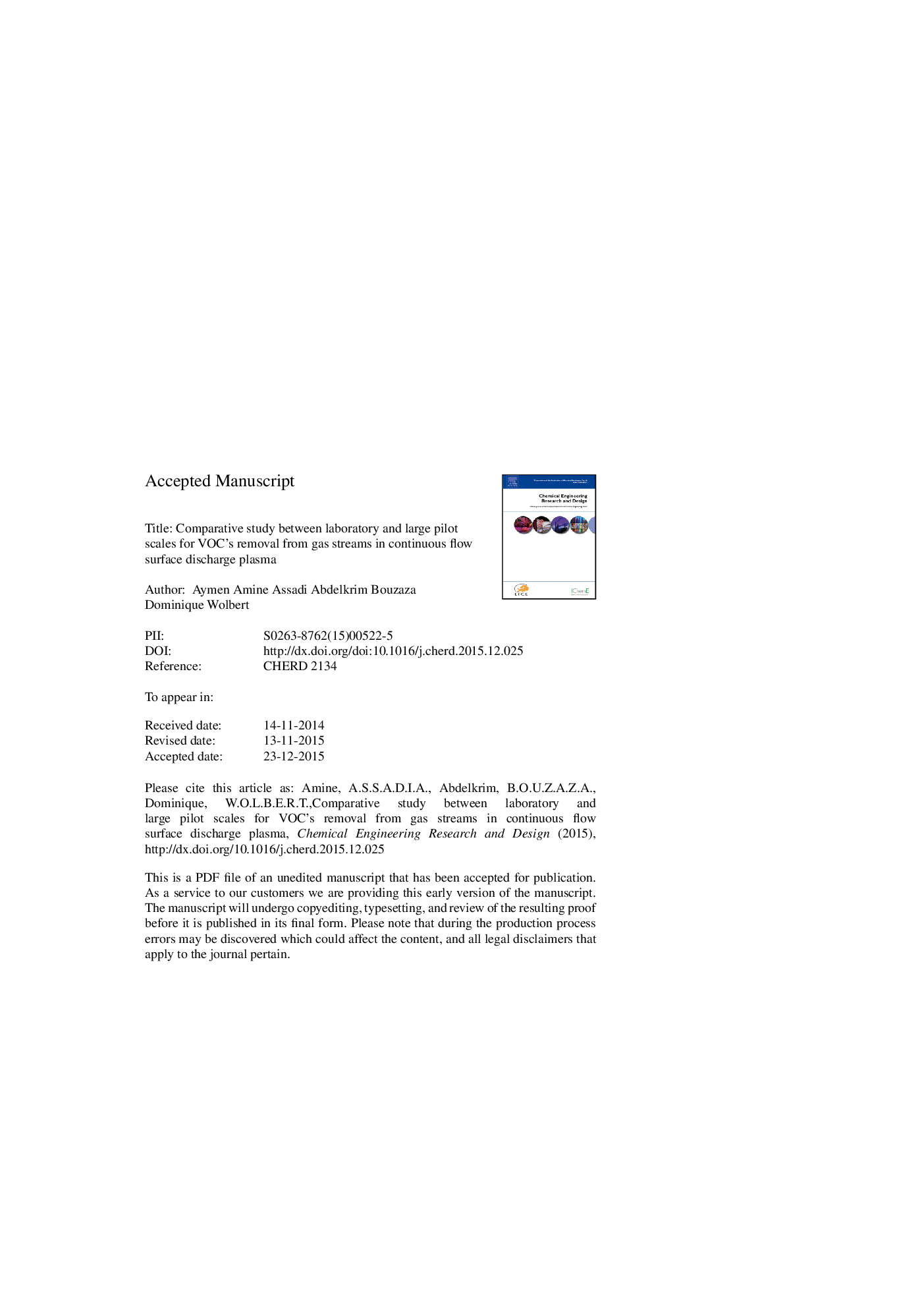| Article ID | Journal | Published Year | Pages | File Type |
|---|---|---|---|---|
| 620885 | Chemical Engineering Research and Design | 2016 | 25 Pages |
Abstract
This work investigated the performance of Isovaleraldehyde (3-methylbutanal) removal from gas streams using continuous flow surface discharge plasma at room temperature. The feasibility of pollutant removal using up-scaled reactor was systematically assessed by monitoring removal efficiency and mineralization at different operational parameters, such as specific energy, air flow rate and inlet concentration. Results show that increasing flow rate lead to improve the removal capacity. For example, when flow rate extends two times, the removal capacity varies from 0.6 to 1.1 g hâ1. Moreover, when specific energy increased, both removal capacity and mineralization were enhanced. Additionally, a comparison between laboratory and pilot scales using surface discharge plasma system was carried out. A methodology of scaling up the surface discharge plasma system was proposed. In this context, removal capacities were compared for different continuous reactors: two reactors at laboratory scale (planar and cylindrical reactor), and pilot unit. The results suggest that the plasma reactor scale-up for pollutant removal can be feasible.
Related Topics
Physical Sciences and Engineering
Chemical Engineering
Filtration and Separation
Authors
Aymen Amine Assadi, Abdelkrim Bouzaza, Dominique Wolbert,
